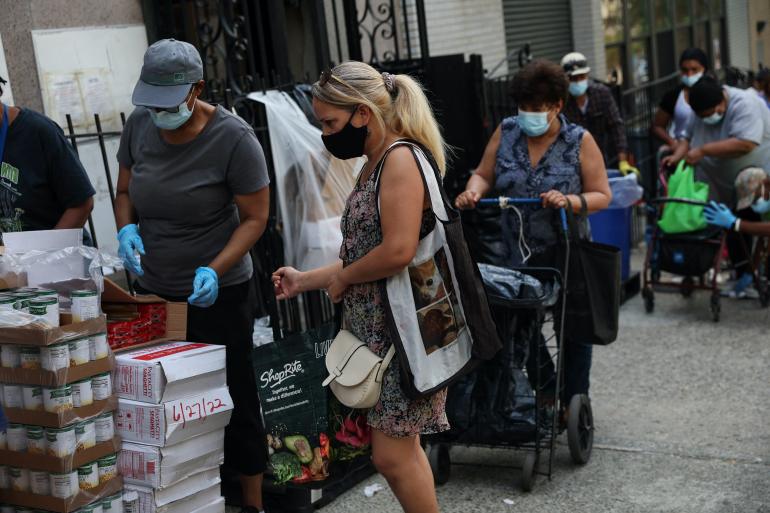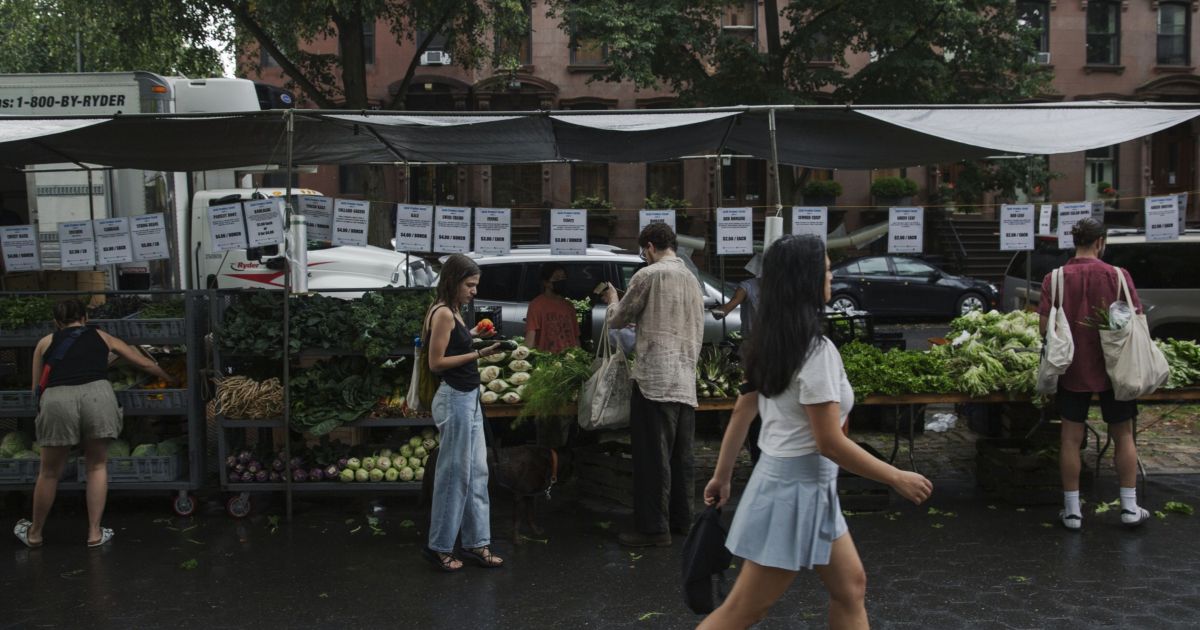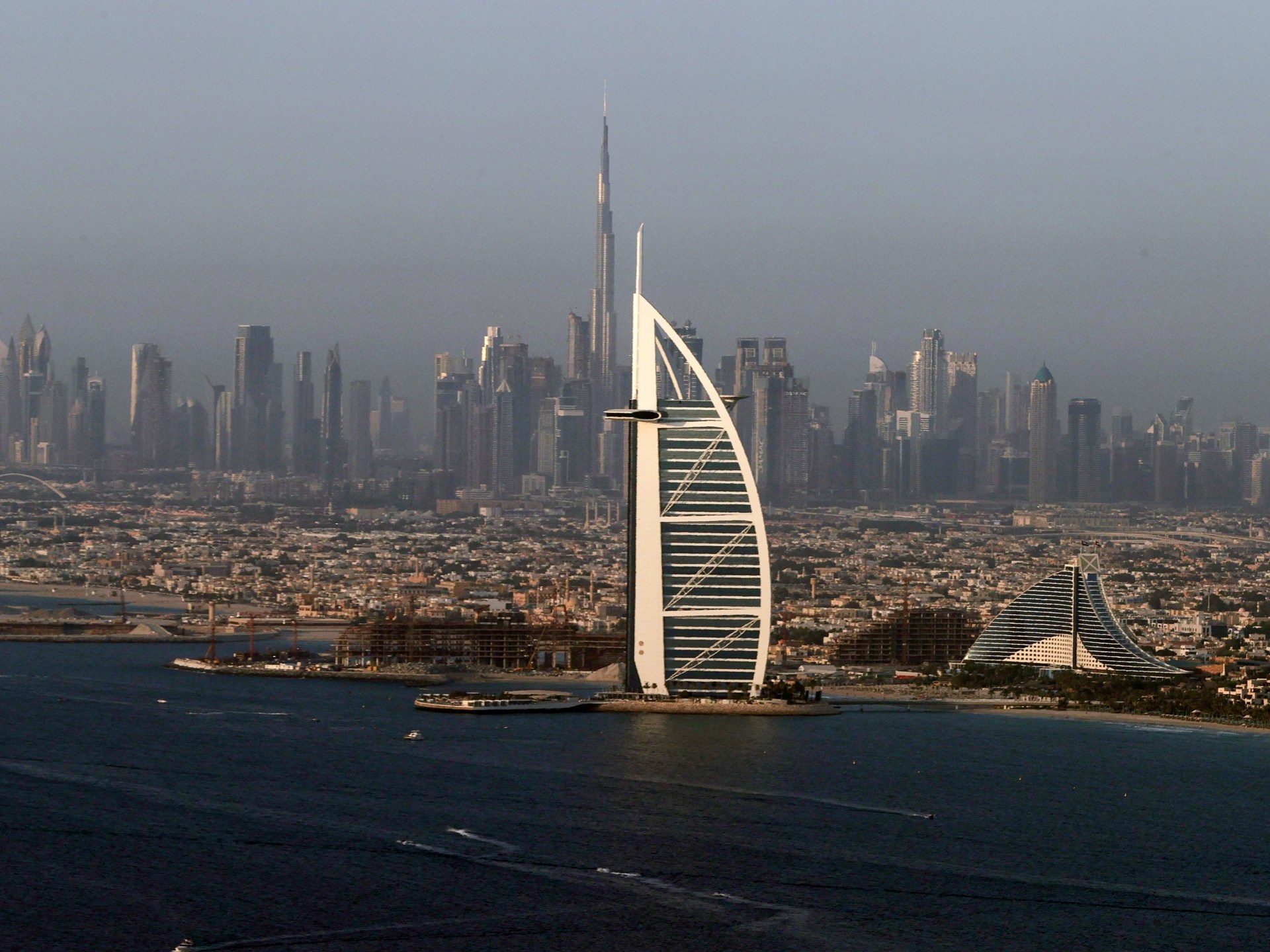Why is US inflation soaring, and will prices cool anytime soon? | Inflation News
Millions of Americans are living on the edge amid historically high inflation at the grocery store and petrol pump, but economists Al Jazeera spoke with say there is reason for hope – even if the trend is still moving in the wrong direction.
The consumer price index (CPI), a gauge of inflation, jumped 9.1 percent in June from a year earlier – the largest gain since 1981. All eyes are now on the Federal Reserve as it meets on Tuesday to discuss monetary policy: Can the United States’s central bank raise interest rates and increase the cost of capital in order to reduce demand, boost supply, and moderate prices without plunging the economy into a deep recession?
“We are really in uncharted territory,” Brent Meyer, policy adviser and economist at Atlanta’s Federal Reserve, told Al Jazeera. “The size of the shocks that have buffeted the economy and the speed and suddenness with which things have changed has put us in a place where it’s very challenging from a monetary policy standpoint.”
Following its meeting next week, the Fed is expected to raise interest rates by three-quarters of a point. But will it be enough to ease price pressures?
According to a recent Pew Research Center survey, three-quarters of Americans say they are “very concerned” about the rising prices. The cost of energy has jumped 41.6 percent in the last year while groceries increased by 12.2 percent.
So why is US inflation soaring, and will food and fuel prices cool anytime soon? And why do some experts foresee a recession yet have reasons for optimism? Here’s what you need to know:
1. The US is ‘still suffering’ from a couple of shocks so it’s unlikely prices will cool soon
During the coronavirus pandemic, the Fed allowed interest rates to drop to nearly zero as the economy came to a complete halt. Businesses shuttered and millions of workers were left unemployed. To aid companies and individuals in adjusting to the economic shock, the US government also spent trillions of dollars in stimulus measures.
But as there were few places to go and spend money, millions of Americans watched their savings pile up. And as the US economy began to reopen, demand for products and services surged. Americans who had been under lockdown went out to eat, shop, and travel. Repressed demand and unresolved supply chain issues sent prices higher. Then, the war in Ukraine once more jolted the world economy. The cost of commodities like oil rocketed.
“We are still suffering from a couple of shocks that are helping to foster the inflationary environment. Supply chain disruptions – I don’t think we’ve seen the end of those effects,” Meyer said.

2. The Fed is limited in what it can do about grocery and petrol prices
The US central bank’s main job is to promote employment and keep inflation in check mostly by raising and lowering short-term interest rates. The Fed has already increased interest rates three times this year, most recently by 0.75 percentage points in June. But it is limited in what it can do for highly-volatile components such as food and energy.
“The Fed’s in a very difficult situation,” Peter Essele, head of portfolio management at Commonwealth Financial Network, a Massachusetts-based firm, told Al Jazeera. “What’s really driving inflation higher is the cost of energy and food, and the Fed does not control those prices.”
The US measures inflation in two ways: headline and core readings. Headline, which came in at a hotter-than-expected 9.1 percent for June, measures the cost of all goods and services. That means groceries, dining out, computers, petrol for cars, and rent. Core inflation, currently at a lower 5.9 percent, excludes the food and energy components.
Sangeeta Pratap, an economics professor at Hunter College in New York City, explained that food and energy are not taken into account when calculating core inflation because of the limited policy options available to address them. “As far as the Fed is concerned, there is only a small amount it can do about headline inflation, mostly the energy and food bits,” she added.
Core inflation has eased in recent months as some supply chain issues resolved. But given the uncertainties surrounding the war in Ukraine, headline inflation continues to grow. Russia and Ukraine are both major providers of food and energy to the rest of the world.
Oil prices have dropped recently after soaring on the heels of Russia’s invasion. US West Texas Intermediate, one of the world’s main oil benchmarks, fell from $122.11 a barrel in June to $95.78 in mid-July. US President Joe Biden tried to assure Americans that the headline inflation reading last Wednesday was outdated and did not yet reflect new energy prices.
Biden may have a point, Essele said. “There is a one to two-month lag between oil prices and energy CPI. August may be too soon but I think it’s reasonable to expect September or October to show it.”
Even if fuel prices offer some relief in the short-term, millions of households who spend a disproportionate share of their earnings on food and fuel will struggle to stay on budget. Meyer of the Atlanta Fed expressed his concern about the growing global food crisis, which he believes will prevent prices from cooling anytime soon.
“Lower to moderate-income individuals are still likely to feel a lot of pain from the increases in the cost of living. The question now is whether that is beginning to cause households to pull back on any non-discretionary [necessary] spending,” he said.
3. If a recession is on the horizon, it won’t be like anything we’ve seen before
In a recession, businesses often start to scale back their recruiting plans, see a sharp decline in sales projections and reduce their capital expenditures for expansion.
But according to Meyer, “the typical firm is really still moving sort of full speed ahead. They’re not acting as if we’re heading into a recession. They’re still hiring and anticipate solid sales revenue growth over the year ahead.”
Businesses are not witnessing a dramatic slowdown in the growth of their sales and revenue, according to the Fed’s business inflation expectations survey. Firms still predict that demand will be high in the next year.

“If [a recession] is on the horizon, it’s one that’s likely to look different than anything we’ve seen in the past,” Meyer said. That’s because “there’s still a disconnect between labour demand and labour supply.”
US unemployment is at a historic low. Millions of Americans who retired or quit during the pandemic – a phenomenon now known as the “Great Resignation” – have yet to return to the labour force while firms struggle to find workers.
“It’s not a question of if, it’s a question of when,” investment banker Essele said when asked whether a US recession is likely. And he is not alone in that assessment.
A recent Bloomberg news survey of economists showed that the risk of a US recession in the next year is 47.5 percent, up from just 30 percent odds in June.
But many market observers believe the recession will be mild. Essele said he expects it to look like the dot-com bubble (a downturn in 2000–2001 marked by a collapse in internet stocks) and “garden-variety rather than the structural systemic recession of 2008”.
4. Yes, there is cause for optimism
US employees are in a better position than they have been in years, said Pratap. In such a tight labour market, workers have more bargaining power and can demand better salaries and benefits.
To those wondering if wage increases will be absorbed by inflation, Pratap responded by saying she is optimistic that the Fed and wider government have the policy tools to keep the economy steady.
“The part involving the geopolitical situation? I’m not so sure. But the reason I’m upbeat is because I believe that sustained high prices will compel us to take action that might potentially be quite beneficial for the planet,” Pratap said.
For example, with Europe and the US facing high oil and petrol prices, they may be more inclined to move towards greener energy.

The price of several goods that drove up inflation during the pandemic, most notably used cars and home furnishings, have started to drop. Inventory is back up, which may signal that achieving demand-supply balance (and lower prices) in key sectors may be within reach.
“There’s compelling evidence that we will return to an atmosphere of 2 to 3 percent inflation,” said Essele, adding that he is looking forward to a rally in equity markets in the second half of 2022 as investors realise the worst may be behind them.
Pratap shares this upbeat perspective: “This is not the 1980s when inflation was out of control. There are many things happening now, technology and politics, which might help us to actually come out of this much better off.”
5. Beware: If inflation sticks around too long, it can lead to a ‘vicious cycle’ of high prices
If inflation hangs around too long, the US may be in it for the long haul, economists warned, because when businesses get used to operating in environments where higher inflation rates are more typical, they tend to price goods and services higher to make up for a forecasted uptick in production costs.
The cost to produce goods and services has already increased substantially. The latest producer pricing index (PPI), which measures inflation at the wholesale level, rose 11.3 percent in June compared with the same month the previous year.
According to Atlanta Fed’s Meyer, it is more likely that businesses will continue to raise prices the longer the economy continues to experience high costs. “If that happens, we end up with an almost self-fulfilling type prophecy, where firms will start to push price increases onto their customers.”
In such circumstances, inflation expectations may spiral out of control, making it even harder for policymakers to bring it back down.
Households experiencing rising living expenses and high food and fuel costs will demand better pay. And in a tight labour market, this can lead to what policymakers refer to as “a wage-price spiral”.
In other words, businesses boost prices as a result of rising costs. When those prices spread across the economy, households start to feel like their paychecks aren’t going as far as they should, so they bargain for higher wages, which drives up costs for businesses and prices for consumers.
“And we end up in this sort of vicious cycle of wages and prices,” Meyer said. “Then things become really unanchored or untethered to the sort of underlying growth rates in the economy.”




